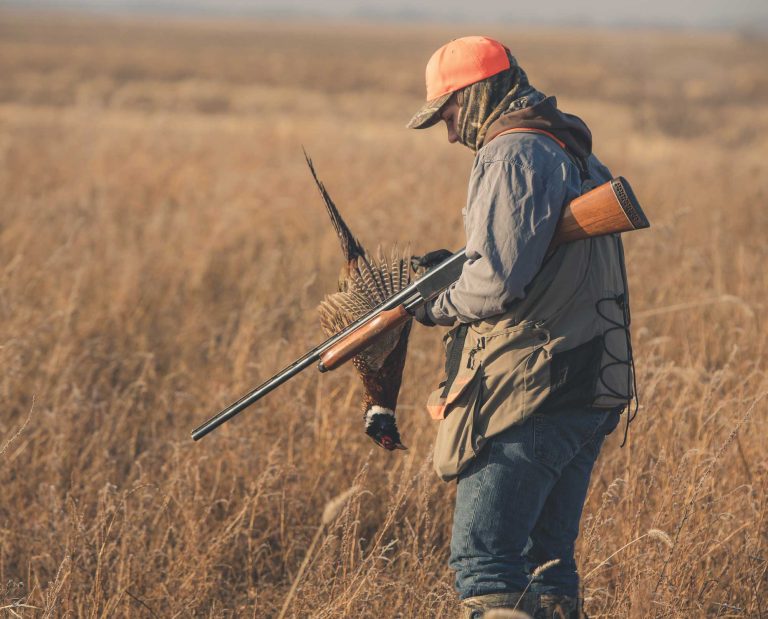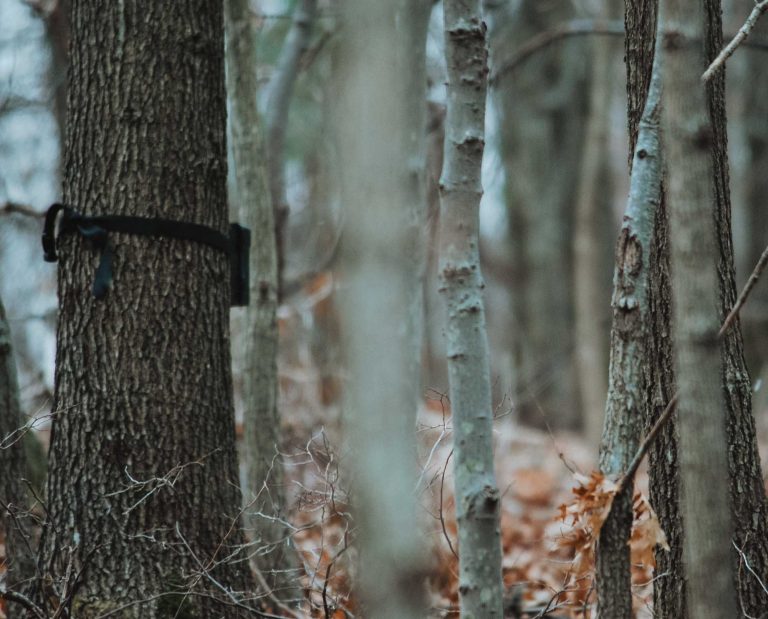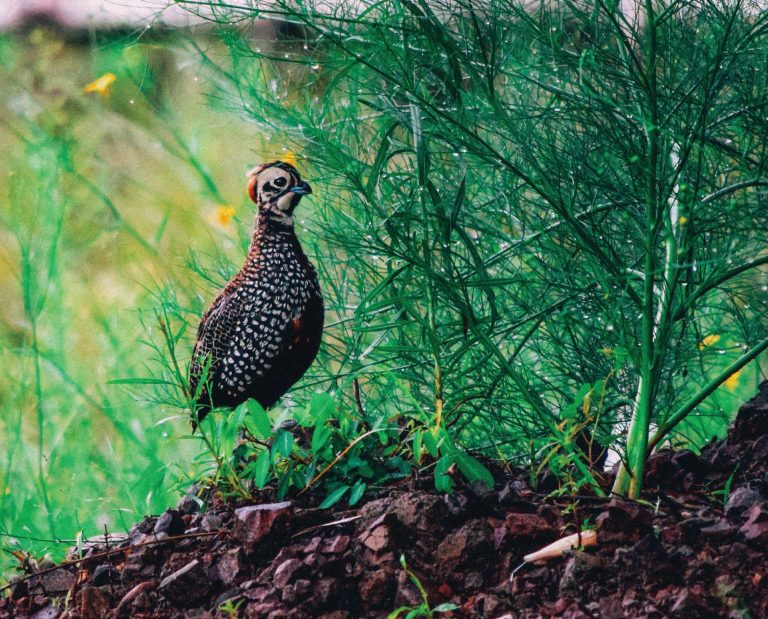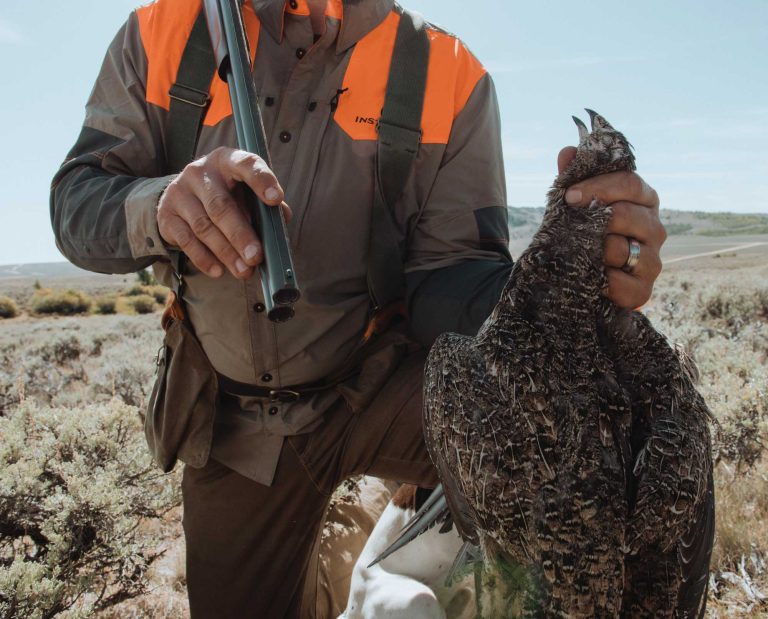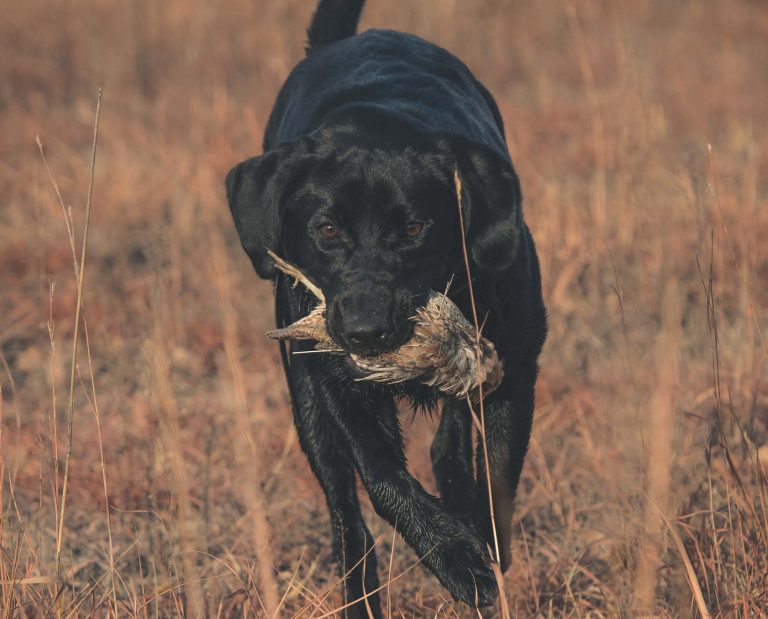How to Self-Film Your Bird Hunting Videos

It is possible to create solid quality self-filmed bird hunts.
Bird hunting videos are a challenge no matter how you look at it. The size of the subject, the speed of the situations, the unpredictability of wild birds, and in some cases, habitat that makes seeing the bird nearly impossible–never mind film or shoot it. Sure, these things may be frustrating at times, but they are the real reasons that lie beneath your love of filming bird hunting.
Patience is certainly part of the game and that comes with a lot of hours of video footage with nothing to show. A single decent ruffed grouse flush on quality film footage can take days in the field and still result in nothing, even for Project Upland filmmakers. Other game birds like the American woodcock can offer easier opportunities but still require contending with frustratingly thick cover in order to make good use of the technology involved. Areas like prairies can offer better opportunities in view of the wide open spaces but at the cost of more distant flushes. So how do we overcome these things, or more accurately, make it a bit easier?
Let’s explore some hacks to up your homemade bird hunting video results.
Read: Hunting Photography- Reinventing the Hero Shot
Techniques for Self-Filmed Upland Hunts
GoPro is still king of the self-filmed hunting video. We say GoPro, but there certainly are other action cameras on the market that are capable of what a GoPro can do. The techniques described here can be applied to just about all these cameras. Sure, there is much more advanced gear being used to produce professional films but even sometimes we at Project Upland sneak a GoPro clip in and it works wonders! See if you can find them in the film First Season.
Attach the Camera to Your Head, not the Gun (or Dog)
Gun mounts for cameras make it a tempting go-to method, but it is not the best choice. The only time a shotgun is facing towards the action is when birds are getting shot at. Your head, however, is always looking at the action, the dog work, the walk-up, and the kill (or miss). Your head will move more fluidly and with less jerks than a shotgun.
When it comes to capturing dog work, a gun mount is absolutely off the board. If someone is pointing their shotgun at a dog at any point they need some re-education on proper bird dog etiquette. Going as extreme as attaching a dog mount to a dog is also not the solution. Watching a dog run through cover via Go Pro attached to said dog is a good way to get motion sickness and lots of unusable footage. For most upland game the habitat can result in the harness falling off, shifting, and you will find it is just plain impossible. Great way to lose a camera as well . . . I have been there.
Head mounts are a common place for motion cameras and are just about the most important piece of gear for self-filming an upland hunt.
When to Be Recording
The idea of when to be filming is critical to actually capturing the action. A good rule of thumb is to always be filming, which means lots of batteries and lots of SD card space. If filming constantly is not an option, understanding when a dog gets birdy is crucial. Dog gets birdy — start recording. Do not stop recording until birds are in hand. You want to preserve the whole memory.
Frames Per Second versus 4K
There are two schools of thought when it comes to which settings are crucial on an action camera. One is slowing footage down which has to do with FPS; the other is cropping which has to do with higher resolutions like 4K.
Due to the fact birds are both fast and small, slowing down footage matters–and that is where FPS (which stands for frames per second) comes into play. On all action cameras there will be a way to change those settings. The availability of FPS will increase as you degrade resolution. For example, on the GoPro Hero 8 you can record at 60 FPS in 4K; if you move to 1080 that number jumps to 240 FPS. Since people export or create a final video in 30 FPS the formula for how much you can slow down an image is based on that. More to come on that below. This becomes crucial when just a glimpse of a bird is what the situation entails. Think forest birds, ruffed grouse, woodcock, blue grouse and spruce grouse.
There are trade-offs to FPS versus 4K. Slowing down footage is great, but what if birds are far off and you want to crop footage? This is where higher resolution comes into play. If you intend to zoom in on footage in post edit, you’ll need to shoot at 4K and export at a lower resolution. This becomes crucial when birds are flushing much father away (and the rule of thumb with action cameras is everything looks farther away). Think prairie birds that like to flush near 20 yards or farther out. This is when higher resolution can be more important than FPS.
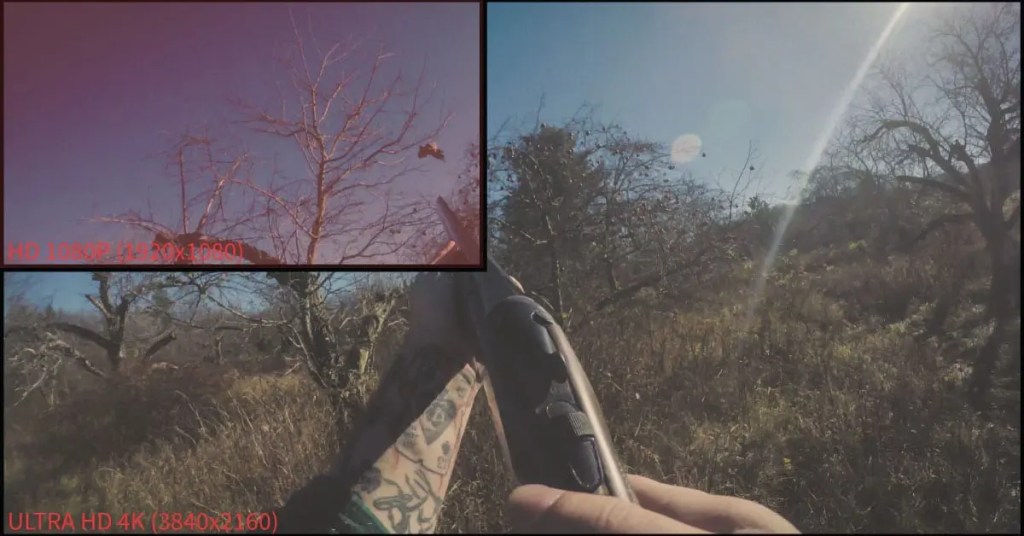
Post Production of your Self-Filmed Bird Hunts
Post production is the most technically challenging part of capturing a bird hunt on video. It can be frustrating, complicated, and out of reach. Professionally produced projects are usually cut on Adobe Premier Pro or Final Cut Pro; however, I do not suggest either of those. They take hundreds of hours to understand and adapt to. Make things simple and use stuff as simple as GoPro’s editing tools or similar consumer-level software.
Keep Things Simple
The best stories are most often told in the simplest ways. In film, that means no fancy transitions, no distracting music, and a lack of special effects. For transitions stick to only three: fade to black, cross-fade, and nothing at all. Minimalism will be your friend on the editing board.
Slow motion may be necessary in some cases and for the most part can be liberally used for best results. As we talked above about FPS, you should never slow footage below the speed you intend to export the project (usually 30 FPS). So if you were filming in 1080 at 240 FPS, that means you can slow down to about 13 percent! I have watched full motion ruffed grouse flushes with no signs of a bird, but slow it down and suddenly a new story emerges.
Music is the best way to avoid sound issues. Mute tracks if need be and cover it with come kind of music from a website. Buying a track from a website like pond5.com is not as expensive as people think. Thirty dollars spent there can make a big difference in the end. Think simple with minimal distraction and do not be afraid to bring the music levels down. For the sake of not causing chaos in the world of sound editing, we will not take this any further. It can be the most difficult part of editing.
Exporting Your Bird Hunting Video
What your export settings should be on a video is something that could cause a brawl at a film convention. But in the world of home videos let’s stick to some simple facts. Most people will watch this video on their cell phone. For the sake of that and the occasional TV or computer watch, stick to 1080 resolution at 30 FPS. In theory you can get away with 720 but it will become more glaring on computers; 4K is just about unstreamable in most situations.
Filming in 4k could matter though. As mentioned above you can crop a 4K image down to 1080p. That means you can crop out a large amount of the frame and zoom in a lot. This can definitely make the action more exciting on the editing board!
At the end of all of this the most important thing to remember is that you had fun doing it. If it becomes a project — stop. Telling a hunting story does not have to be a kill reel. It does not have to be all hits. It should be a real story of the passion you experienced while hunting.
Have specific questions about self filming bird hunting? Ask below!



